The first Allsvenskan loss for Malmo FF and Jon Dahl Tomasson. At the Borås Arena, Elfsborg scored with Frederik Holst’s goal and took all three points. With less possession and passes, how had Jimmy Thelin’s team done it?
In this tactical analysis, we will show you the tactics that helped Elfsborg to beat Malmö. The home team were well-prepared, hence, having a good performance in different phases of play.
Lineups
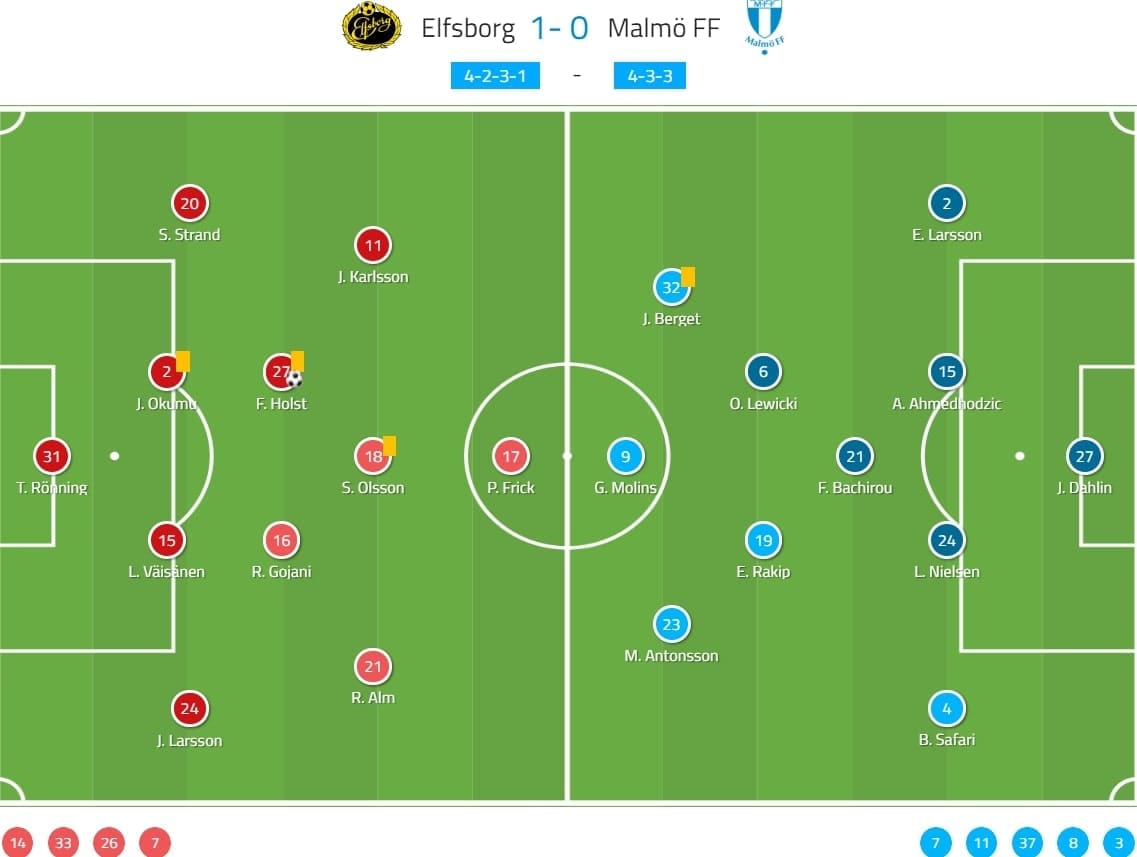
Thelin put a very similar 4-2-3-1 team in this game. The only change was the right-back position, as Johan Larsson replaced Christopher McVey.
Tomasson’s Malmö tried to play a 4-3-3. Behrang Safari continued to start over Jonas Knudsen, the former Ipswich left-back. The former Crystal Palace loanee, Erdal Rakip was a part of the midfield three. At the frontline, Jo Inge Berget and Marcus Antonsson were the wingers.
Elfsborg offensive phase
Offensively, Elfsborg were adopting a rather direct approach, using long balls to enter the final third. Complicated and risky build-up plays were avoided, especially when Malmö set their first and second defensive layers high.
However, when Malmö’s pressing was disorganized, Elfsborg still exploited this opportunity to create a better room for the players to play an out-ball. In some cases, the highest opposition was pressing alone without the defensive covers. The Di Gule were calm to bypass this player in the 2 v 1 situations.
As an example, Guillermo Molins (#9) was pressing Joseph Okumu below. He tried to be clever by curving his run, believing this would shadow the receiver. But, Robert Gojani (#16) was not static here. The Elfsborg pivot also moved according to Molin’s position, made himself available for a pass.
This was important as the directions of the direct plays were ensured. If the passes were played under pressure, Malmö might be controlling the angle which bought time for the defence to read and react. Sometimes, this 2 v 1 combination occurred between Tim Rönning and a centre-back, but the concept is the same.
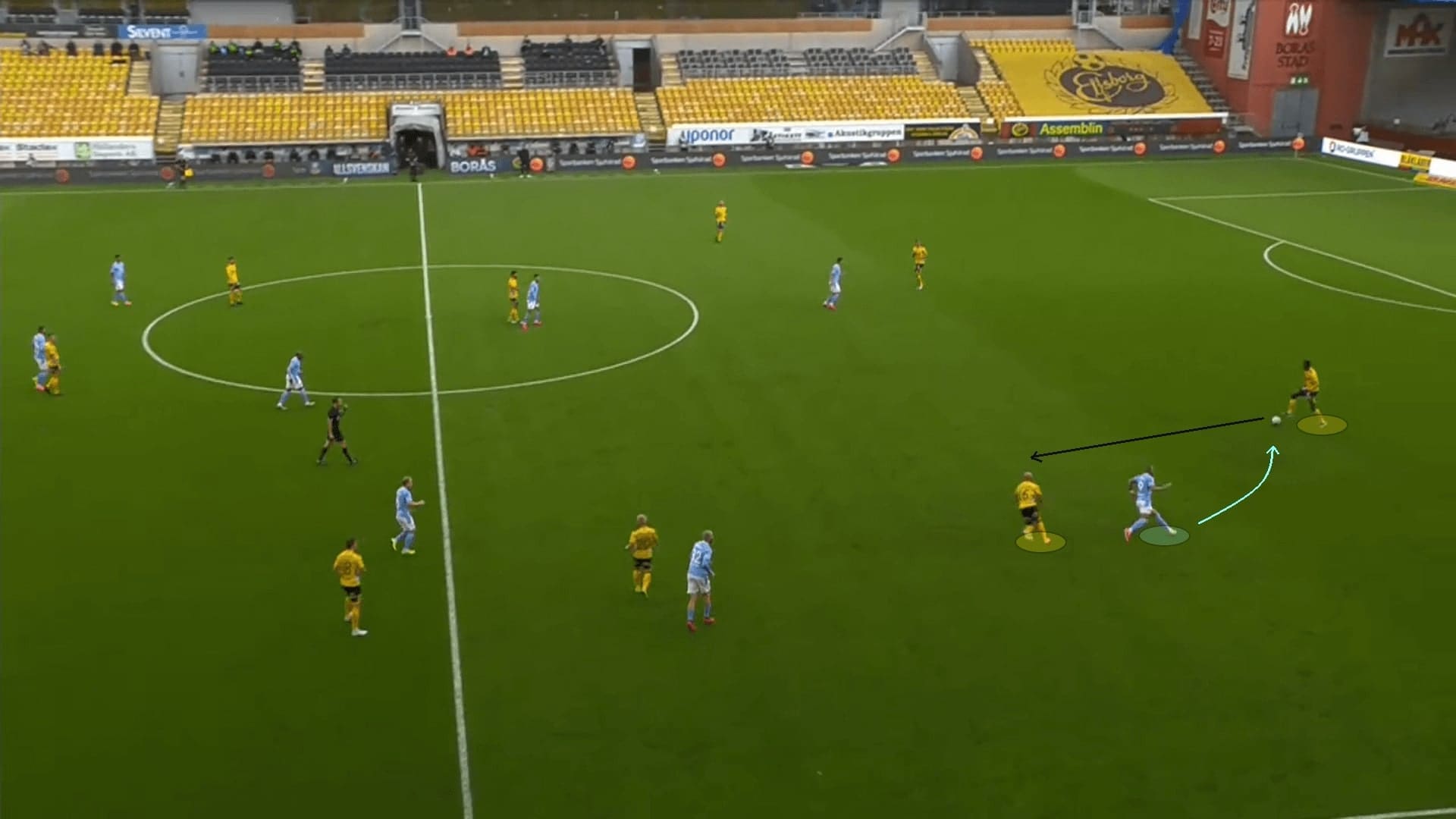
When the passer was not under pressure, he could initiate an attack by passing into the final third directly. Instead of attempting a target man, these passes were travelling to the free players at flanks or spaces behind the defence. Meanwhile, Elfsborg committed players to the Malmö backline for these plays.
In the first 45, Okumu was the ball-playing defender on most occasions. In the hopes of using the diagonal passes to find the players at the opposite flank, the wingers even switched the positions. Therefore, sometimes Jesper Karlsson was on the right flank while Rasmus Alm was on the left.
Usually, the wingers stayed at the half-spaces to keep the Malmö backline, particularly the full-back narrow. This generated spaces in the outer zone for the direct passes. Here, J. Larsson had spaces when pushing up to receive the diagonal pass from Okumu.
Constrained by the limitations of the long passes, Elfsborg might not be winning every ball in the offensive third.
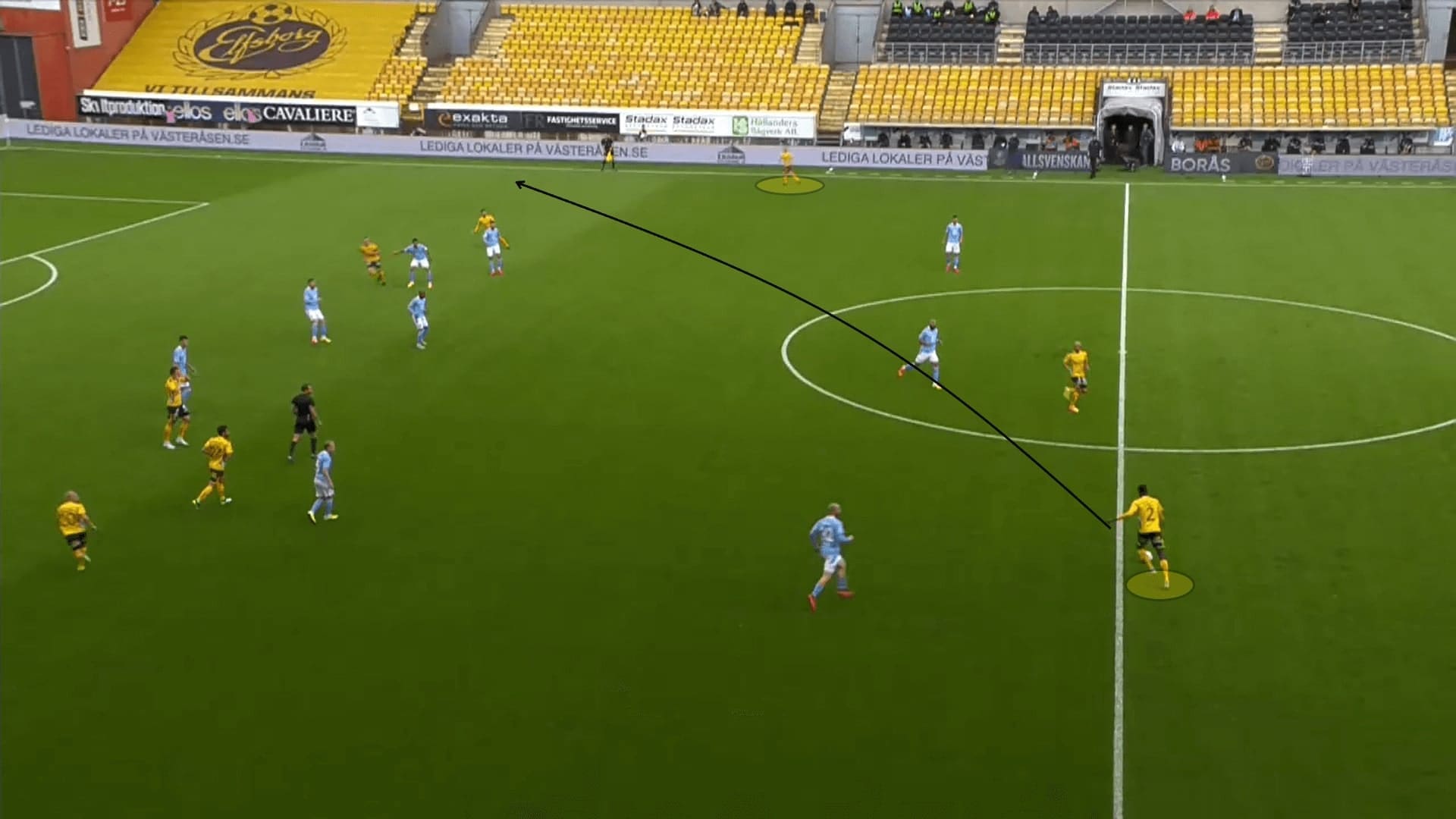
Since Okumu received passes more often, the left-back was connected at times to progress play. Elfsborg exploited Malmö’s 4-3-3 defensive shape, which the horizontal coverage was weak. Simon Strand (#20) often had the freedom to join the attack. The left-back could occupy the outer zone, or behaving as an inverted full-back to balance the attack when plays were developing at the other flank.
When given spaces to cross, Elfsborg would not dogmatically reach the byline as deep crosses was also an option. Here, Strand was free when the opposition right-winger stayed narrow. Meanwhile, the front players were staying with the backline and looking for a cross.
As the winger, Karlsson was playing smartly by exploiting the blindside of the full-back today. Here, his narrow positioning occupied Eric Larrson and kept the pressure away from the left-back.
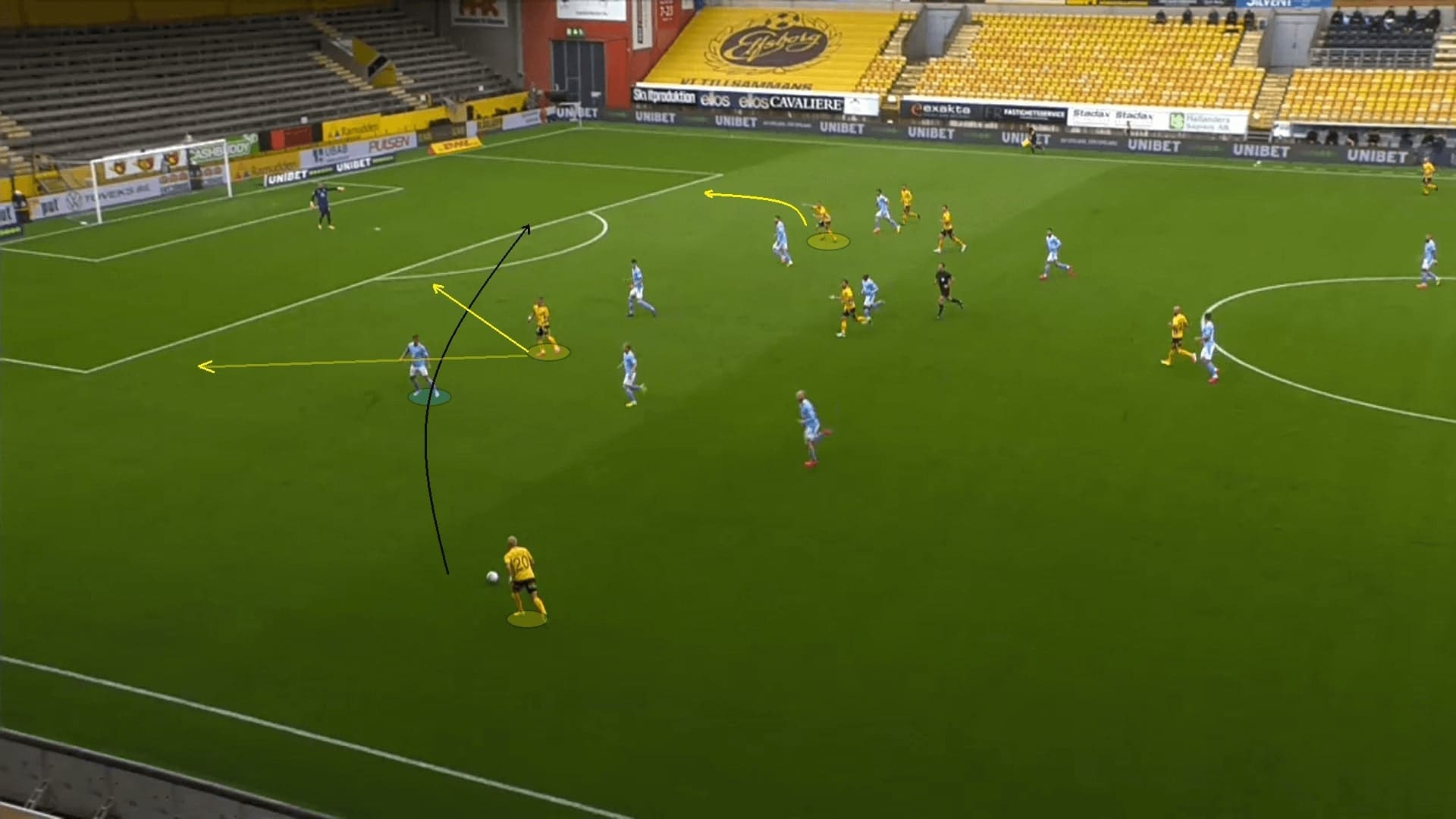
Of course, Karlsson’s positionings were flexible according to the situations. Under other circumstances here, as Per Frick (#17) between the right-back and the right centre-back, Karlsson stayed behind E. Larsson (#2) in this attack. Again, a long ball was the easiest way to access the final third.
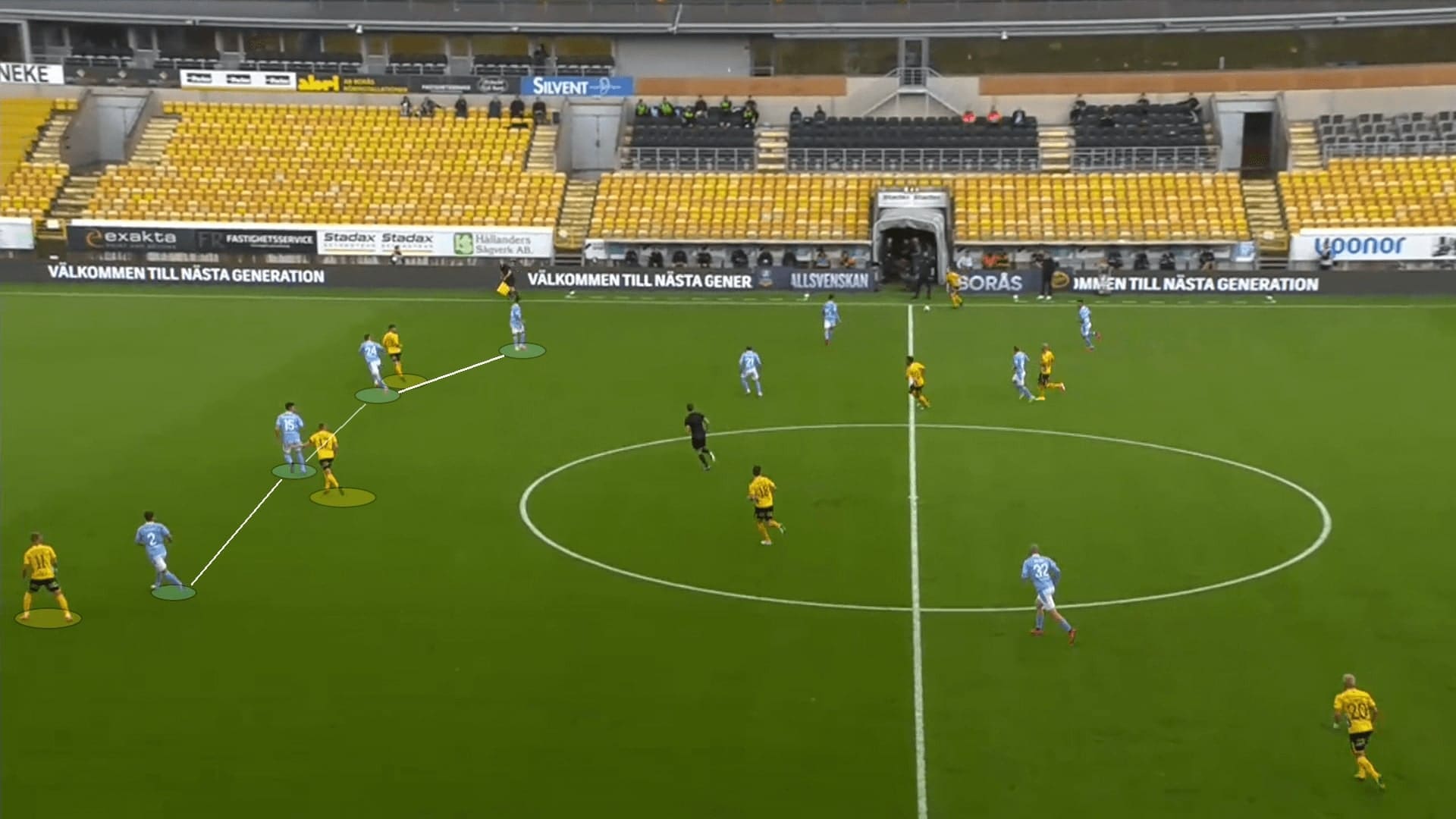
Elfsborg defensive phase
Elfsborg adopted different defensive approaches according to the situations. They were more aggressive to press in the first half, but adjusted to defend deeper after Holst scored the goal.
Below is the PPDA graph of Elfsborg. The contrast before and after the hour mark was clear. The figure ranged from 6.8 to 17.7 from 1-60 mins, but escalated tremendously, reaching 30 to 98 in the rest of the game.
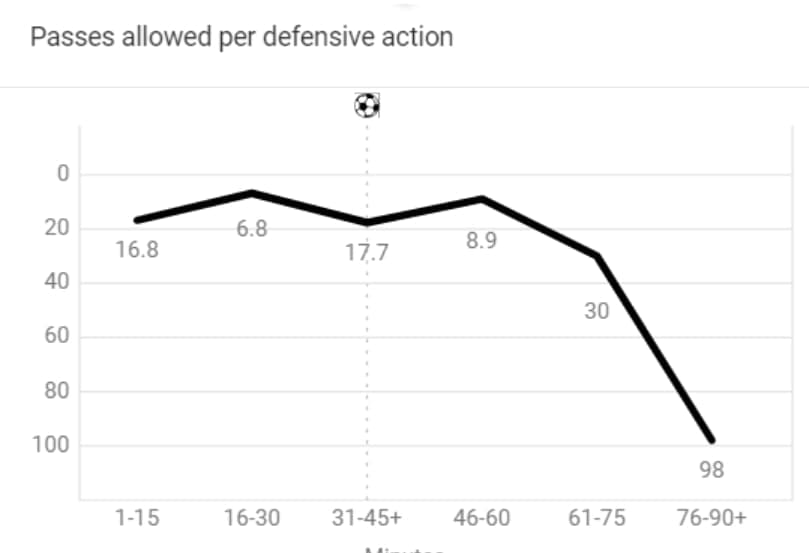
In general, the defensive shape was a 4-4-1-1 from Elfsborg. A mix of zonal and man-marking approach was used to give Malmö a difficult build-up. The two highest layers were formed by Frick and Simon Olsson respectively. They occupied the central zone, providing the defensive covers and might even staying in front of the ball, leaving the midfield line to pressure the opponent. This was conducive to the offensive transitions, as Elfsborg could initiate a counter-attack whenever the highest point was provided.
To compensate and cover the winger, the ball-side full-back also stepped out to man-mark the winger. J. Larsson did this when Alm was approaching Safari. If the ball was moved back to Frick and Olsson’s zone, the two would continue applying the pressure.
Malmö were having poor positional plays because of the players’ positionings. Too many of them were staying on the same vertical lines, which was suboptimal. When the opponent stayed between the two players, he could access both targets. In other words, one Elfsborg man could mark two Malmö players. As an example, Gojani could do that as Fouad Bachirou and Rakip were on the same vertical line.
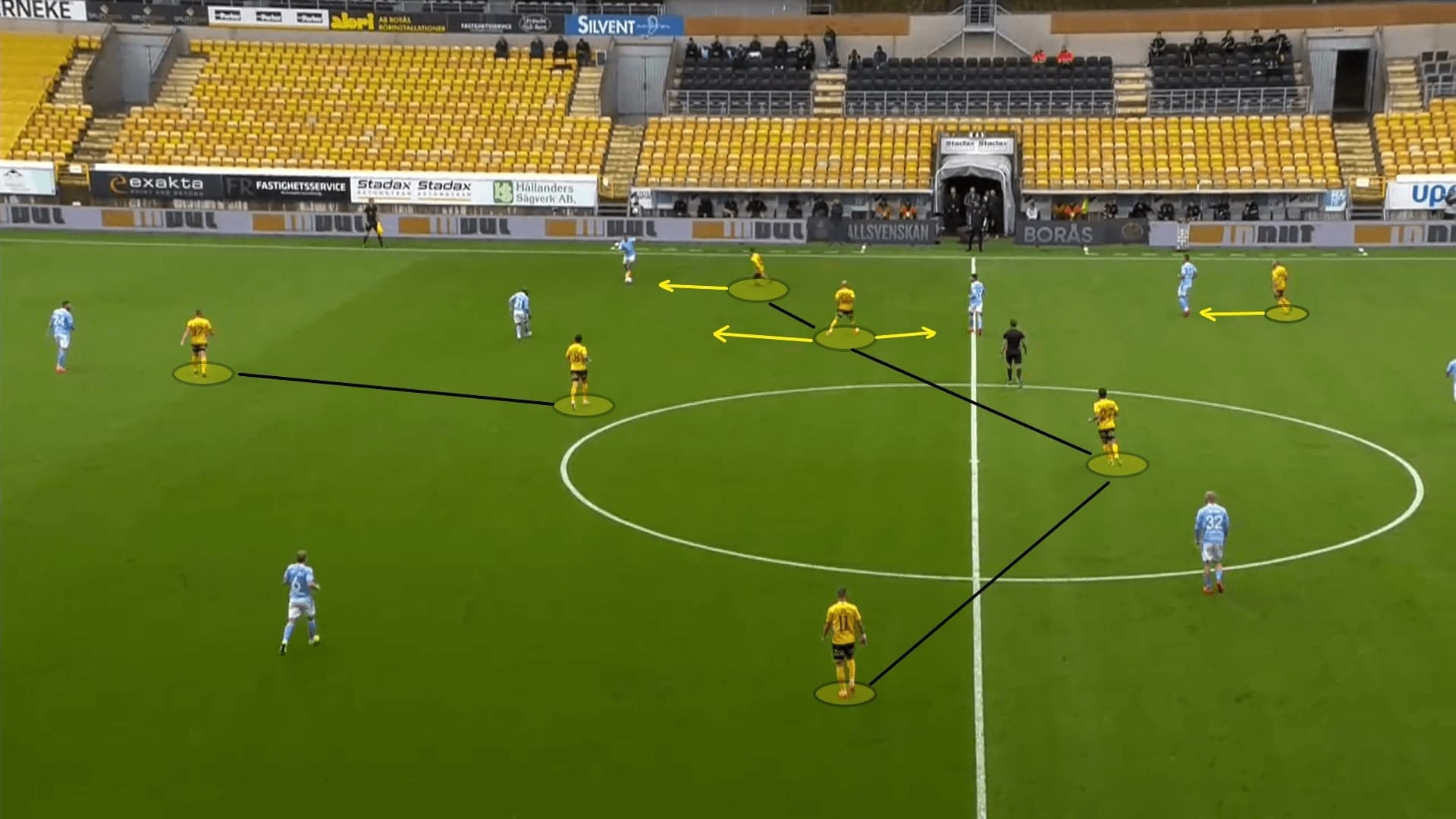
During the press, a heavy and strict man-marking was applied at the backline. This was important as Malmö also utilized Molins as a target man to escape from the press. The defenders were fully aware of the striker, going out tightly behind his back and suffocated many forward passes to Molins.
The players who followed Molins out should base on the positioning of the target, sometimes it was Okumu and sometimes it could be Leo Väisänen.
An example was illustrated here. Okumu marked Molins tightly, pressured him from his back and denied him from turning, holding plays or releasing the third man. The challenge intensity was always strong and Molins suffered a lot. Meanwhile, the left-back, Strand also man-marked the right-winger as we have explained in the above analysis.
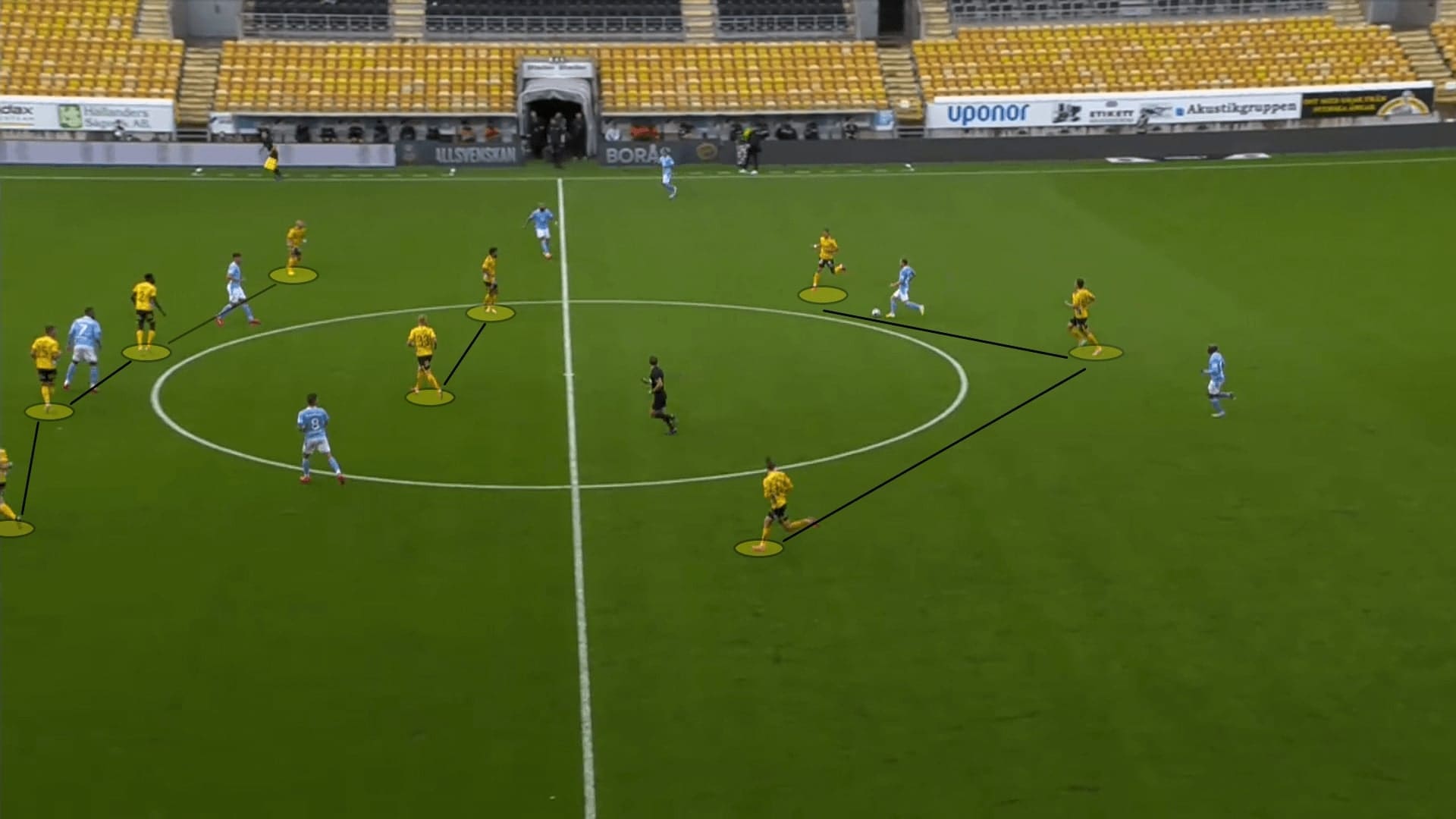
Forming a compact low block at the centre, you are safe against Malmö. This was the approach of Elfsborg also. When the team retreated and allowed the oppositions to progress into the central third, a vertically compact block was maintained centrally, containing all options within the zone. We drew the shape below.
The most important was to force the ball wide, where Malmö failed to create the dynamics with the full-backs. Here, E. Larsson received the pass from Anel Ahmedhodžić because the progressive options were unavailable at the centre. Even the right-back could cross, Elfsborg had enough players to defend in the penalty box.
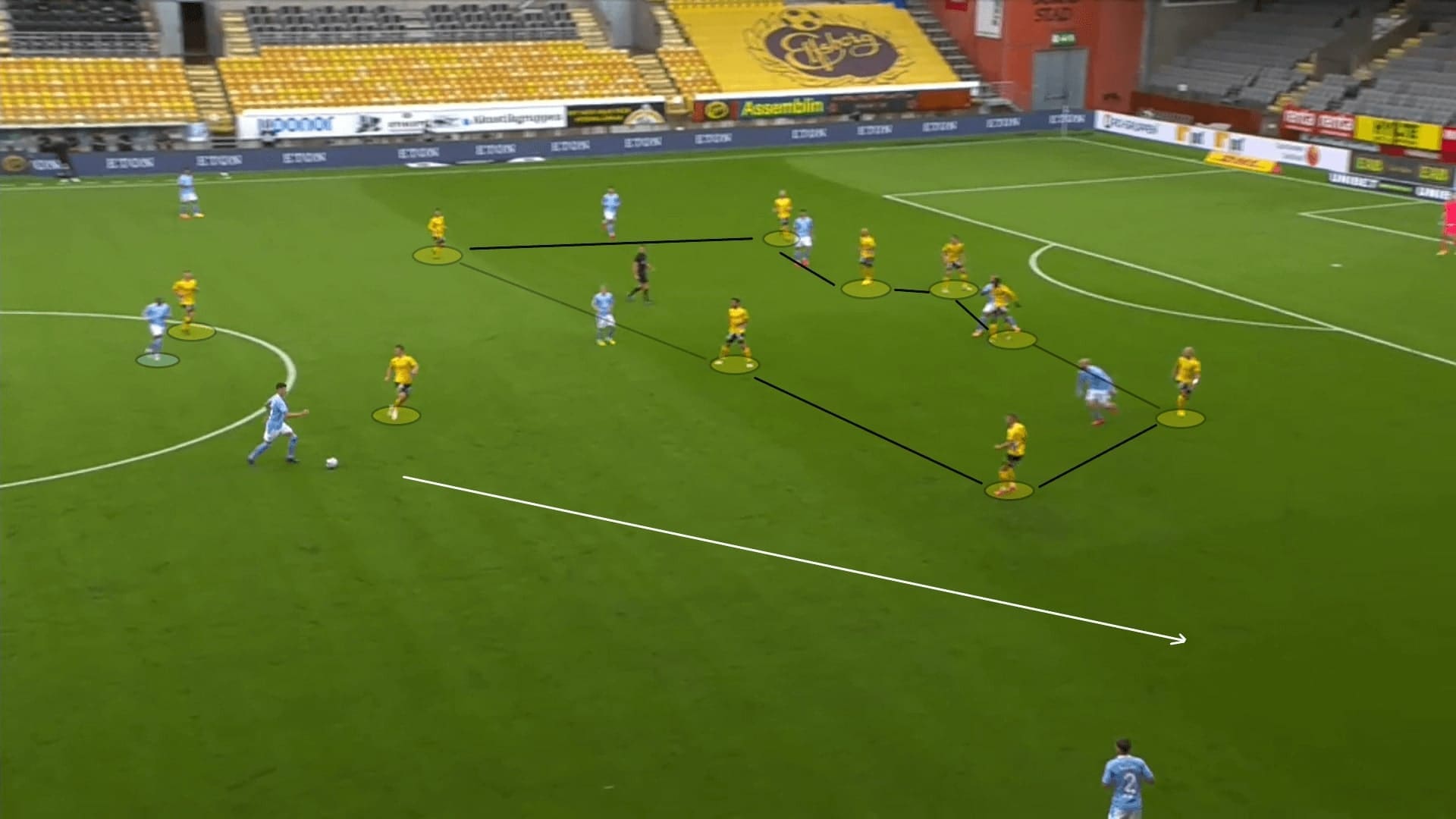
The second half was different, as the 4-4-1-1 was changed to a 4-2-3-1. This symbolized the positionings of the defensive midfielders were deeper and more conservative. The shape was drawn below.
In this game, Elfsborg planned to let Oscar Lewicki receiving the pass as his offensive and passing threat were below his partner. By contrast, Bachirou should be marked and receiving instant pressure on-the-ball. This was a successful tactic and hindered the Malmö build-up plays.
Here, the Elfsborg midfielders stayed deeper and closer to the defence, allowing Lewicki to receive the pass and progress plays. Lewicki was the only option as Bachirou was shadowed initially.
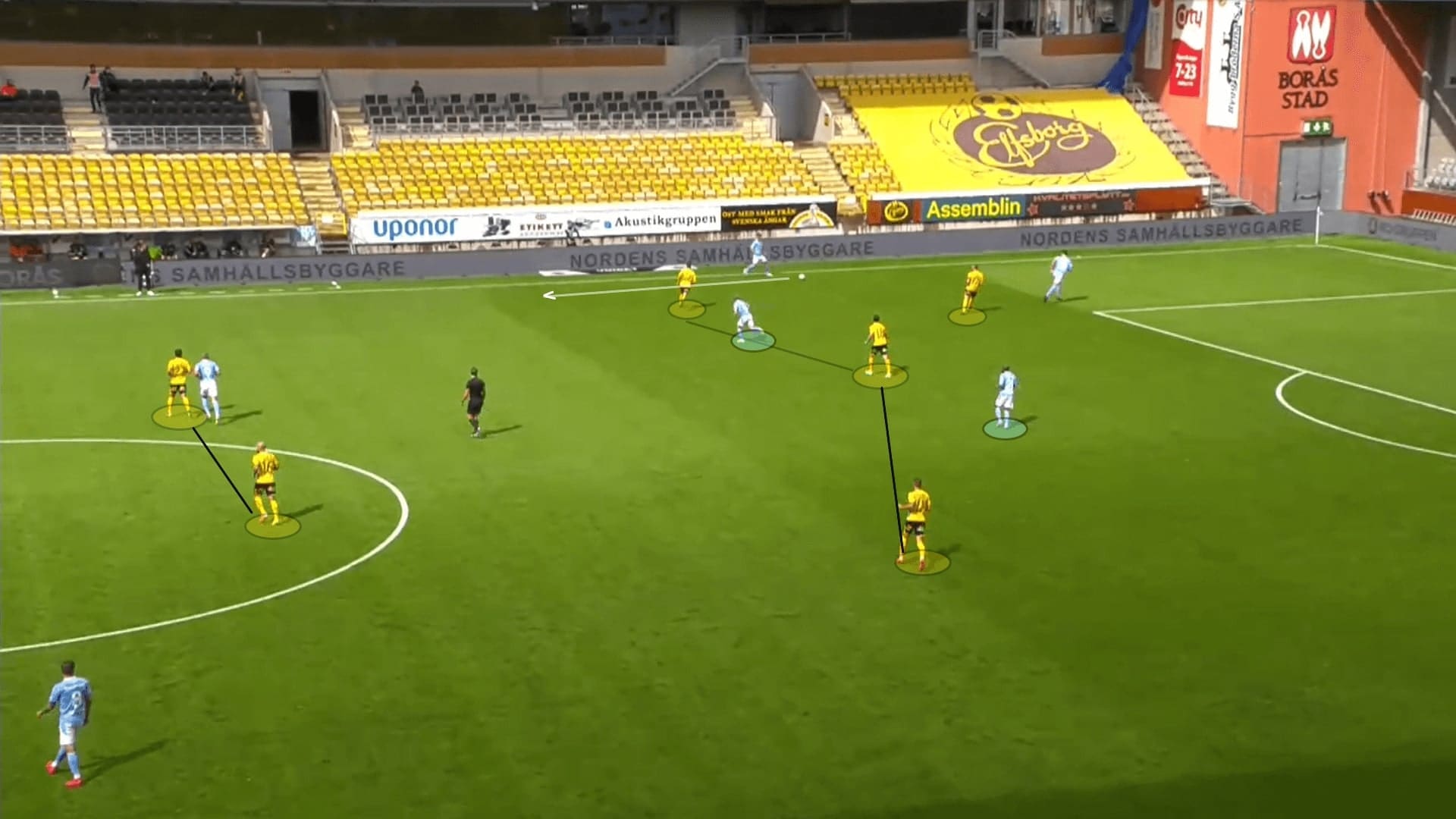
A second example was demonstrated here to show how the pivot shielded the defence. The duo now positioned themselves in front of the backline, shutting the passing lanes and compressed spaces.
Consequently, Malmö could not directly find the highest players with ground passes. This control of progressive option allowed Elfsborg players to read the passes easier, hence, they were preparing to defend earlier and more effective.

Tomasson made a smart change by using Ola Toivonen, the former Toulouse striker clearly received some instructions to boost the attack. Instead of pushing the backline with Kiese Thelin, Toivonen’s position was not fixed. On some occasions, he dropped deeper to connect plays as well. Assuming Elfsborg were defending in that man-marking approach as explained, this is an effective strategy to generate spaces and creating 1 v 1 isolations on the centre-backs.
However, Elfsborg also prepared to deal with a two striker system and this was related to the function of the pivots. Now, the centre-backs defended zonally in the box, seldom follow the dropping players. Although this allowed Toivonen to run freely at the half-spaces below, a pivot would track and the centre-backs just retreat.
As a result, Okumu could read the cross and clear it. Elfsborg defence was not disrupted by the introduction of Toivonen greatly because of the switch of system.
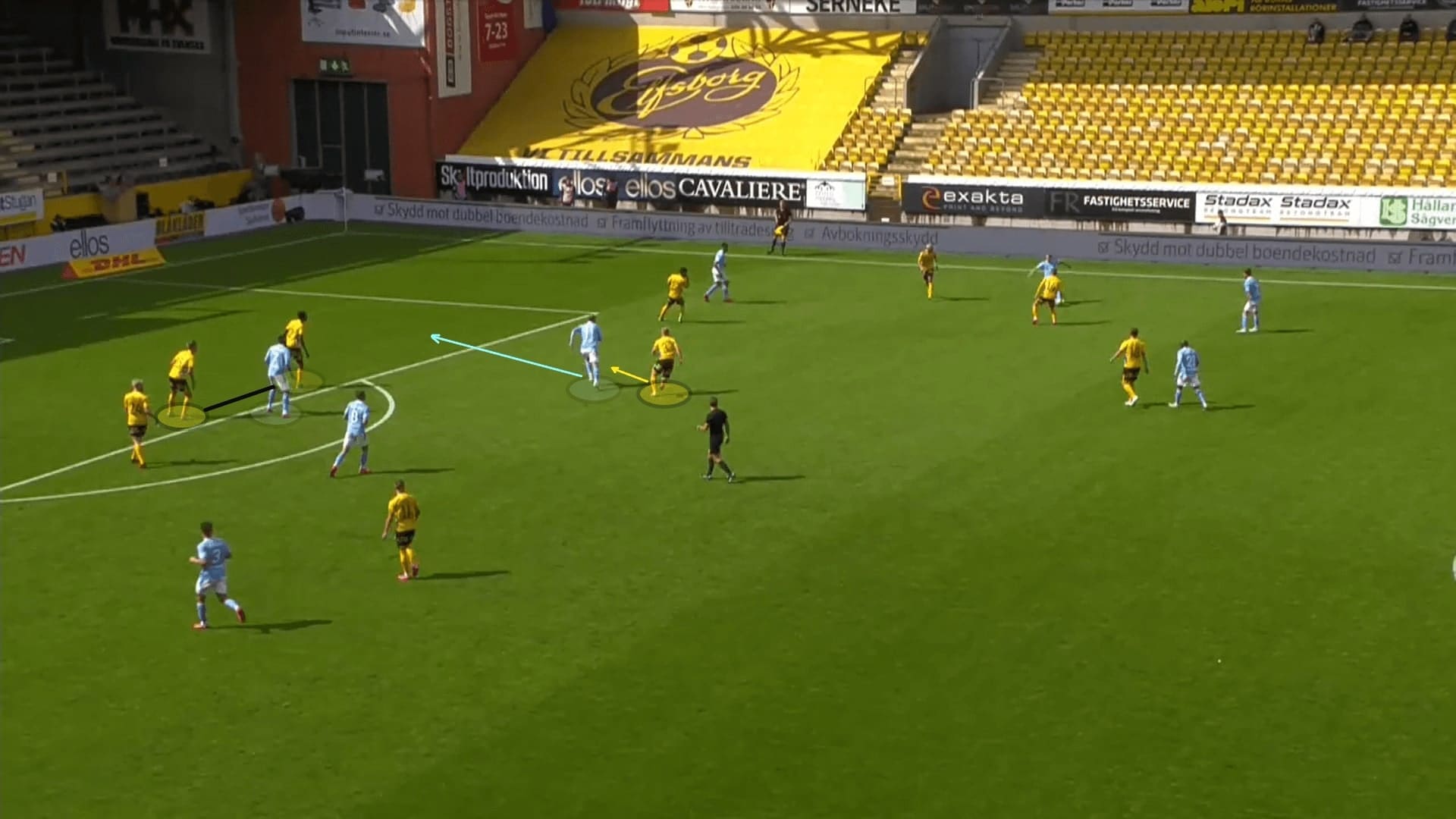
Dominating the transitions
Apart from the offensive and defensive phase. Elfsborg were also performing well in the transition phases, as well as picking the second balls. The offensive transitions were always a threat, as the job was clear – find the highest runner behind the lines.
This means when Elfsborg regained possession, the highest players, usually the wingers and Frick should speed up and attack the backline without thinking. The carrier only had to release the running players.
As an example, Gojani tried releasing Frick with a pass that attempted spaces behind the defence. Since Malmö were holding a high line and committing the full-backs high, this strategy was effective as spaces were available everywhere.
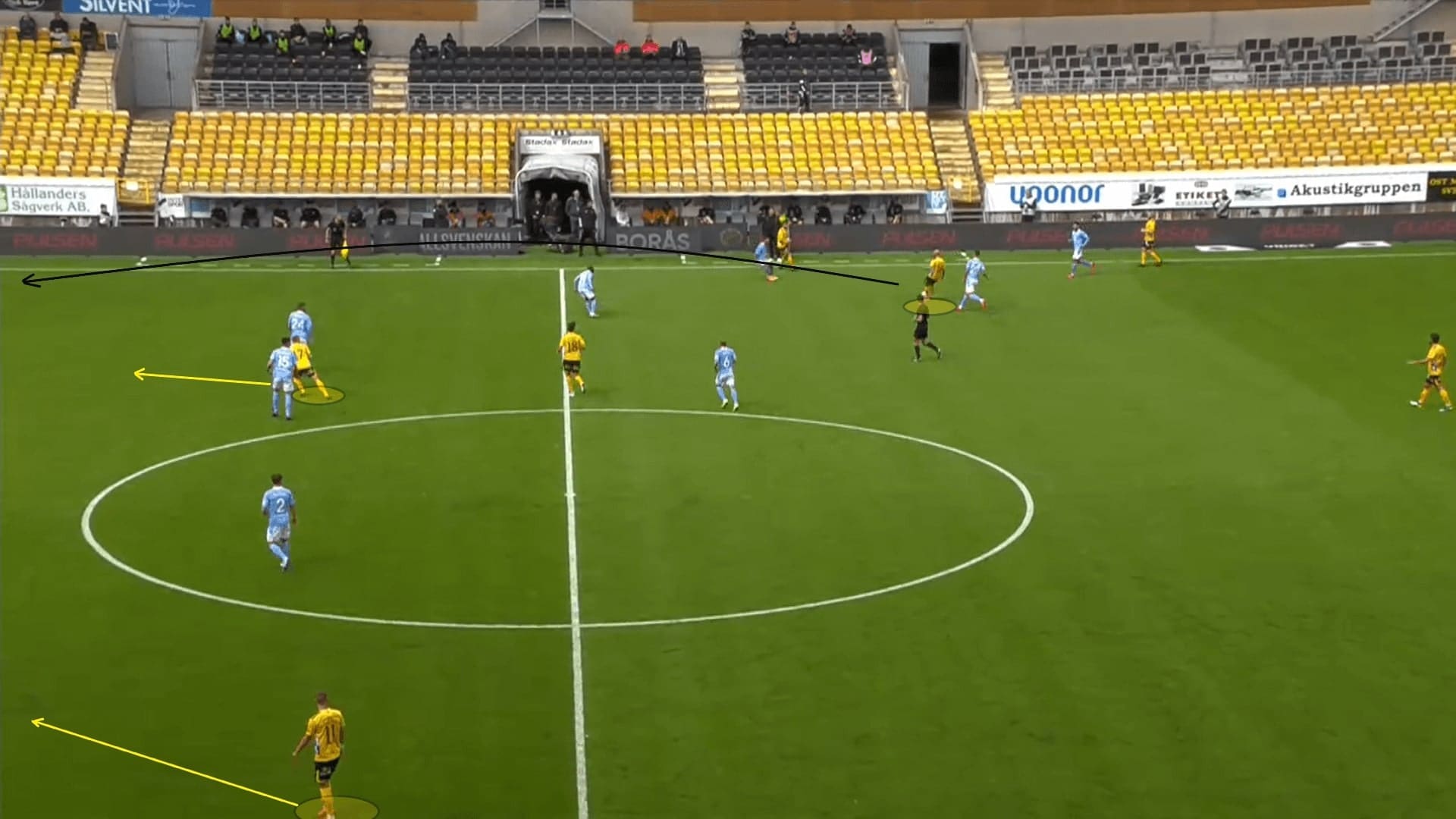
If the passer could not pick a runner or the highest player was not ready yet, then, Elfsborg connected the link player as a second route.
Here, Elfsborg regained the ball deep and at least Karlsson and Olsson were in their own half. Strand could not initiate a counter-attack instantly, and because of the pressure from three angles, a pass has to be made and Holst was found.
This pass to the link player (Holst) bypassed the counter-pressure and bought rooms for the next execution. It was a smart approach to keep the ball and trigger the counter-attacking opportunities. If Elfsborg played every ball immediately, Malmö could regain the ball and reorganize the attack, the Di Gule would suffer.
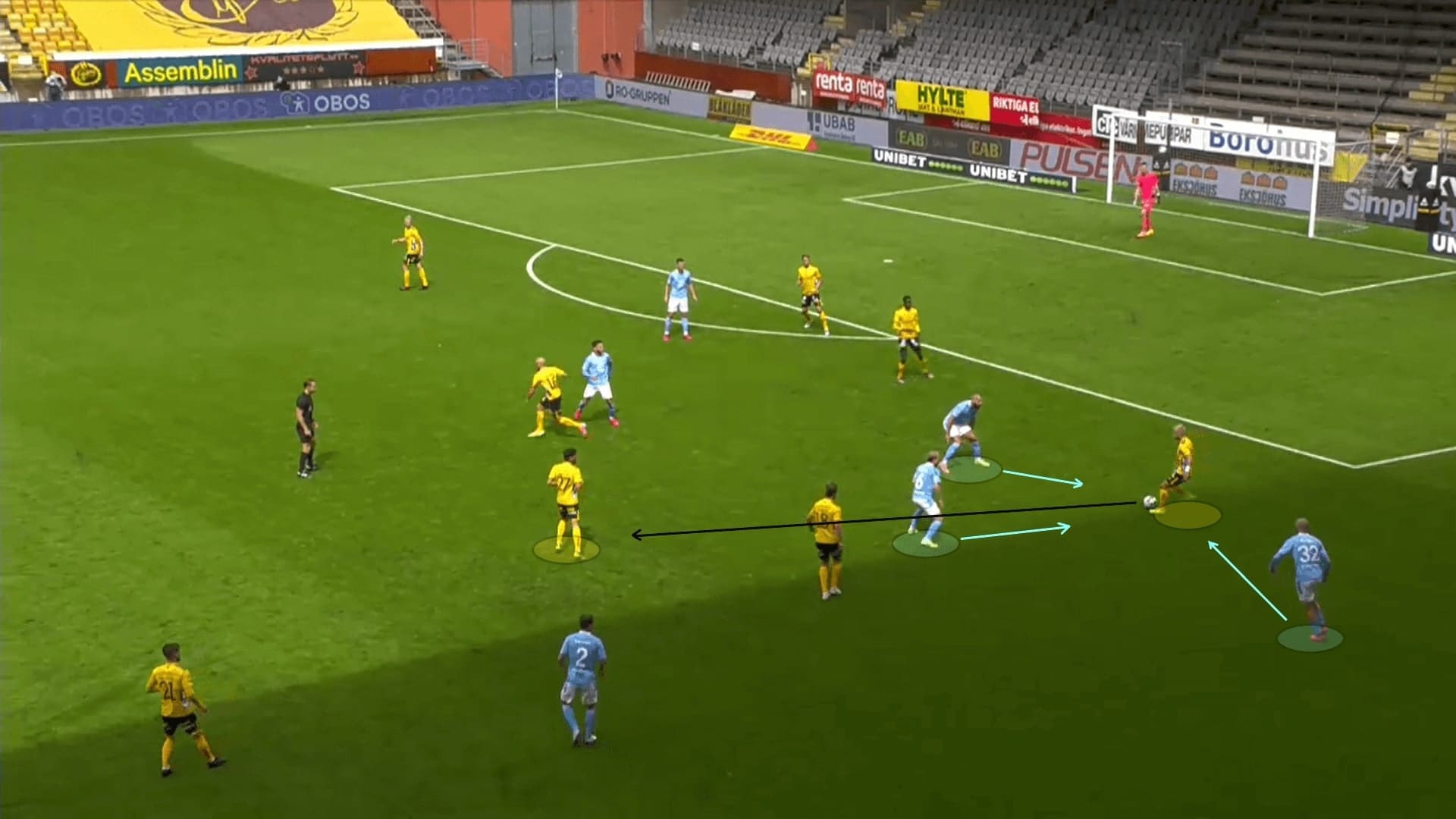
Apart from instant pressure on receivers or carrier in the defensive transitions, we would also highlight how well did Elfsborg prepared for this phase. When attacking the box, two to three players were lurking around the box to suffocate the counter-attacks, and the striker was man-marked heavily at the backline.
Here, two men were tasked to cover the shaded region in case Elfsborg lost the ball in the box. Offensively speaking, they were also an option for a pass. If Malmö committed players deeper to initiate the counter-attacks, at least Elfsborg kept the threat away from the goal initially.
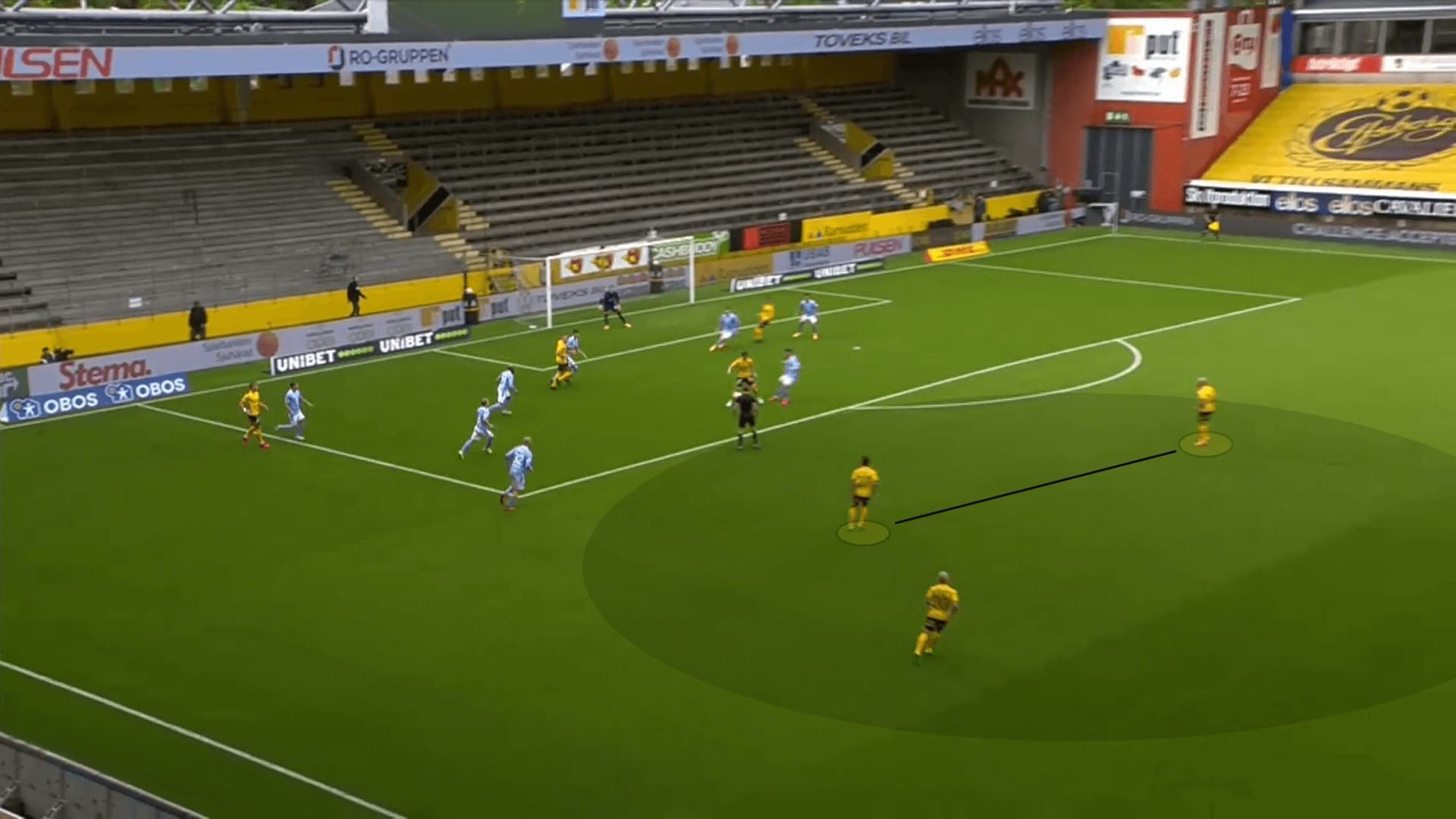
The last example was demonstrating Elfsborg’s excellent attitude in this game. They were committed to fight for the second balls and try triggering the offensive transitions. As mentioned, pressure the receiver was common in this game.
Here, the ball would drop to Safari and it was impossible to win the initial ball. However, even the ball was travelling, the Elfsborg player quickly changed his direction to the potential receiver, and as a result, this forced into a duel and Malmö were not exploiting the opened shape of Elfsborg in this chance.
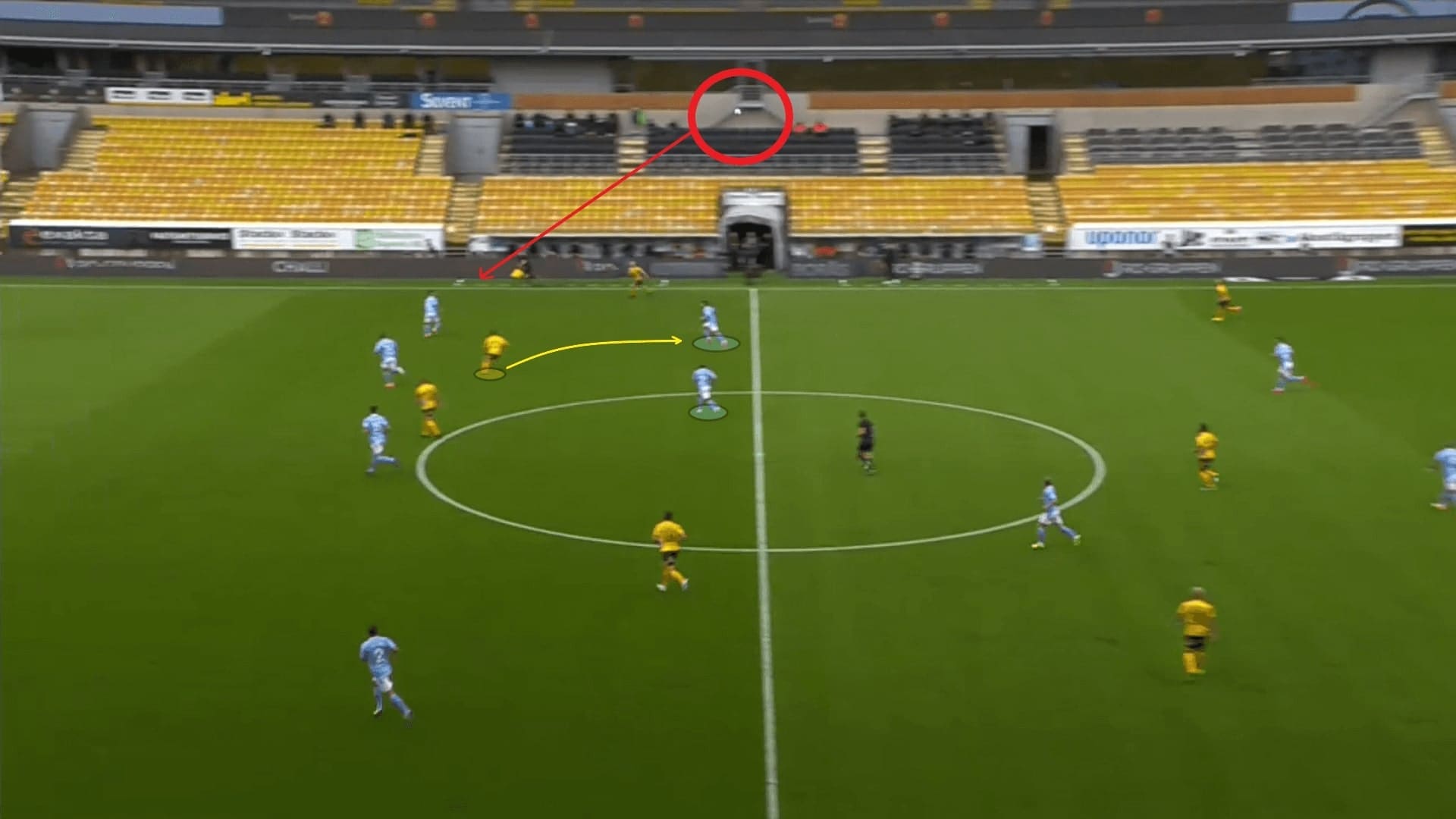
Final remarks
Malmö fans would be furious at Tomasson and his team right now, as the second of Allsvenskan 2019 were not performing the same level as they did previously. The standards of some players were below par, they need more to pursue a win. Maybe, the Svenska Cupen would be a chance to pick up their form.
In general, Elfsborg were quite good today. Their tactics were simple and useful, and Thelin’s men were able to control the flow on most occasions. After this win, they climbed above Malmö with 10 points, ranked fifth of the league.





Comments